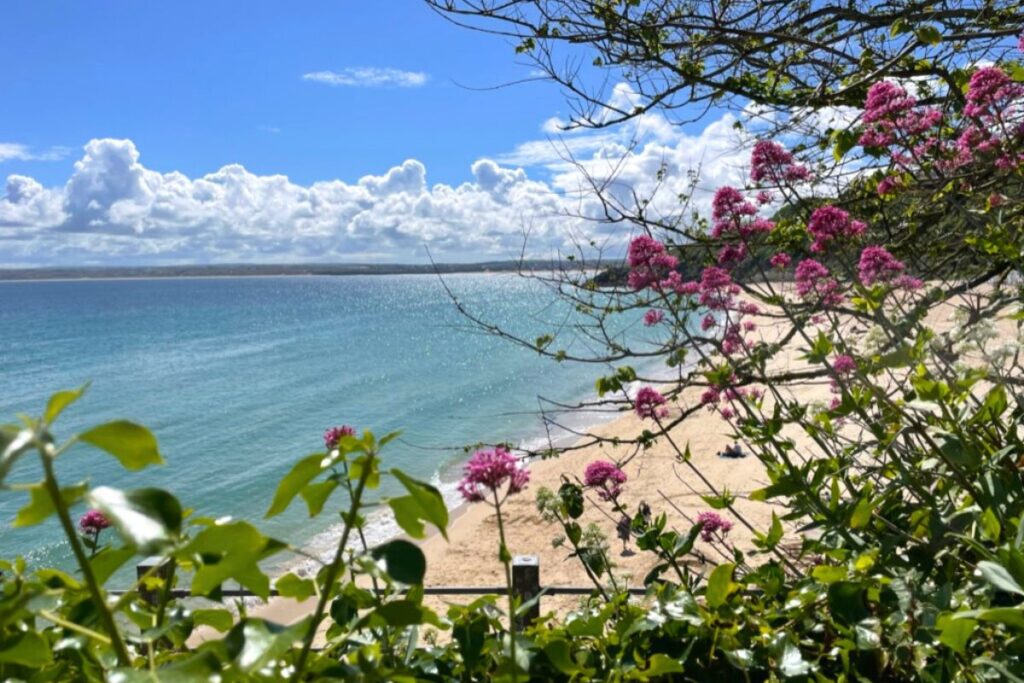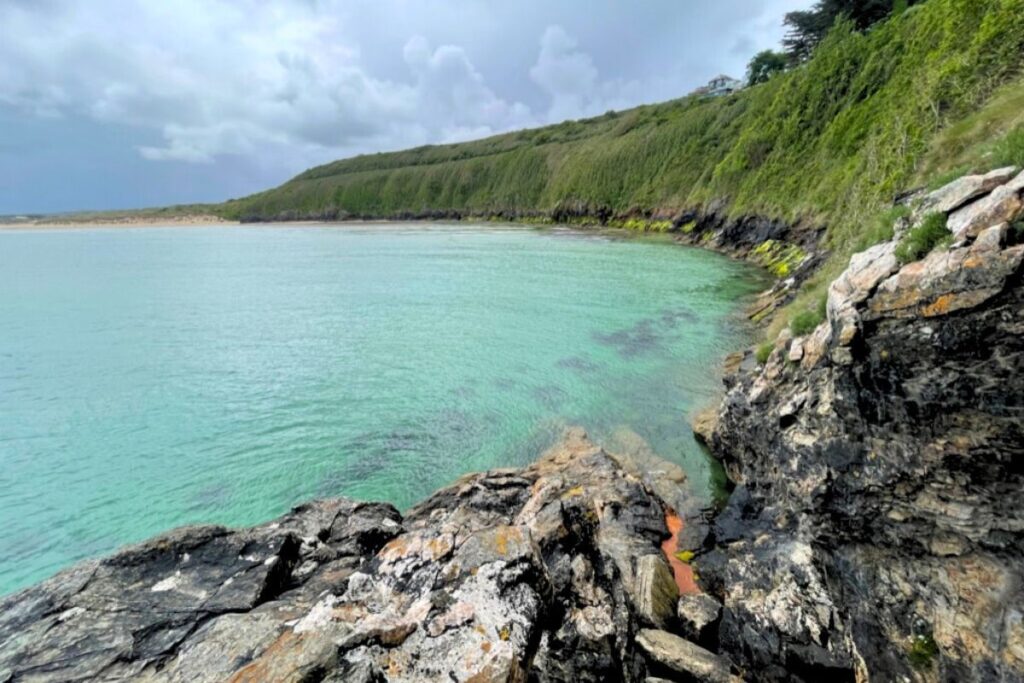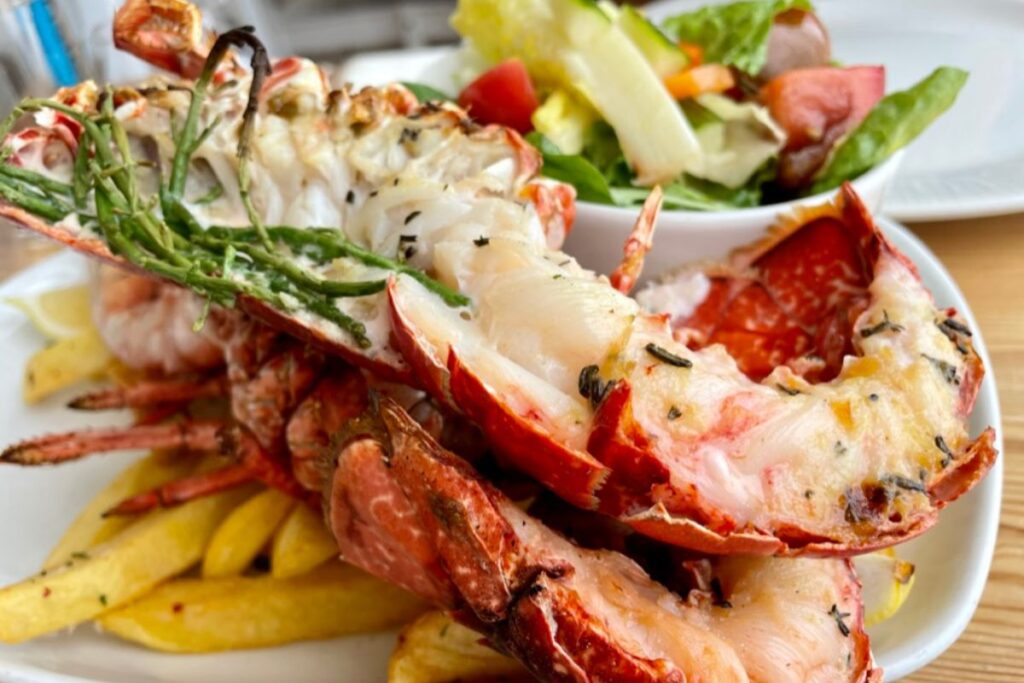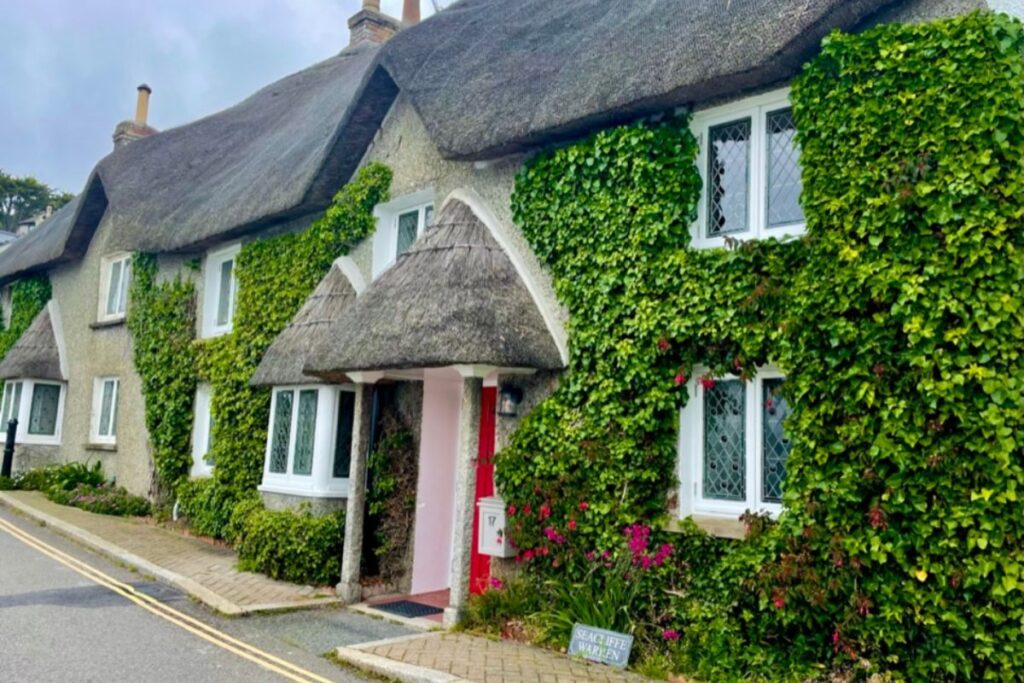Best Time to Visit Cornwall: By Season, Weather, & Costs
Please note that some of the links may be affiliate links, and at no additional cost to you, I earn a small commission if you make a purchase. I recommend only products & companies I love and use, and the income goes back into making this little blog successful!
If you’ve ever wondered where English people go to get that much-needed Vitamin D without leaving the notoriously cloudy (but charming) island, the answer is unequivocally Cornwall.
And for good reason! Cornwall is a county located in the southwest of England, United Kingdom, and is known for its pretty coastline, rich history, unique culture, and a sort of “is this the UK?!” jaw-droppingly gorgeous landscapes.
Cornwall is also highly, highly seasonal – so the best time to visit Cornwall will be in the summertime, even better in very early fall.
So let’s dive into the weather by season, costs, and a few little activities I recommend – including a festival – towards the end!
Overall Best Time To Visit Cornwall
The best time to visit Cornwall depends on your preferences. If you’re looking for warm beach days and a vibrant atmosphere, go during the summer. If you prefer milder weather and fewer crowds, consider visiting in the autumn.
I think the spring is still quite chilly to visit, and the winter is out of the question… masochistic.
💡 Quick Disclaimer – just keep in mind that weather can be unpredictable, so it’s always a good idea to be prepared for varying conditions regardless of when you visit.

When is the best month to visit Cornwall?
The best month to visit Cornwall largely depends on your preferences for weather, crowd levels, and activities.
Generally, the summer months (June to August) are the most popular times for tourists due to warmer weather and a variety of outdoor events and festivals. However, this is also when Cornwall can be quite crowded, and accommodation prices will most definitely be higher ($200-$300 a night).
If you prefer milder weather and fewer crowds, consider visiting during the shoulder seasons of spring (late May) and early autumn (September). During these months, you can still enjoy relatively pleasant weather, especially in September, and you’ll have a better chance of experiencing Cornwall’s natural beauty without the summer crowds.
Keep in mind that Cornwall’s weather can be unpredictable even during the summer, so be prepared for some rain and pack accordingly.
Pro Tip: It’s also a good idea to check for any local events or festivals!
What is the hottest month in Cornwall?
The hottest month in Cornwall is typically July.
During this time, temperatures tend to be the warmest due to the influence of the maritime climate, with the surrounding ocean moderating temperature extremes.

Is Cornwall warm all year?
Absolutely not. Cornwall is pleasant and warm, starting from June to early September at best.
What is high season in Cornwall?
In Cornwall, the high season generally falls during the warmer months and when kids are on vacation. So basically, from July and August.
If you decide to go around this time, here are some practical tips:
- Plan your road trip to avoid traffic. It’s about a 4-5 hour drive out from the London area, and it can sometimes feel like all of England is heading west. Plus, there is only one lane in each direction, so backups happen.
- Book accommodations ahead of time. It will be packed, and you’ll want to be in walking distance of the beach or the town you’re staying in, because parking will also be a hassle.
- If you’re taking the train to Cornwall, book this early too! Ticket prices go up the longer you wait. This is what we ended up doing, and we booked our tickets 2 months in advance.
- Check out the Boardmasters Festival dates, and decide if you want to go or avoid the crowds and price hikes!

Best Time To Visit Cornwall By Season
I would recommend visiting Cornwall in the summer and early fall. Here is a breakdown of what the weather looks like and what activities are best, season to season.
Cornwall In The Summer ☀️
June to August is the most popular time to visit Cornwall due to the warmest and most stable weather – the sun is out, and lots of buns are out with it!
The temperatures are generally pleasant, ranging from 15°C to 25°C (59°F to 77°F).
Summer is my favorite in Cornwall – it’s great for beach activities, water sports, and outdoor exploration. People are out and about, the countryside and the little Cornish ports are bustling!
Keep in mind that this is also the busiest tourist season, so popular attractions can be crowded, and accommodation will be more expensive.
Cornwall In The Fall 🍁
September and early October in Cornwall offer milder weather and fewer crowds compared to the summer.
The temperatures are still relatively comfortable, ranging from 12°C to 18°C (54°F to 64°F).
This is a great time for exploring Cornwall’s scenic landscapes, coastal walks, and charming villages. Just remember to pack a coat and some boots with you – winter is coming!

Cornwall In The Winter ❄️
Cornwall’s winters, November to February, are mild compared to many other parts of the UK, but it can also be quite rainy and windy.
From a Texas girl’s perspective, these winters are wet and chilling to the bone. The temperatures average around 5°C to 10°C (41°F to 50°F).
Also, keep in mind that a lot of the attractions and accommodations, even restaurants, might be closed or have limited hours during the winter.
Cornwall In The Spring 🌷
Spring, from March to May, can be an OK time to visit Cornwall as the flowers bloom and the landscape becomes vibrant green.
The temperatures start to rise, although they can still be a bit chilly, ranging from 10°C to 15°C (50°F to 59°F).
The perk is that It’s generally less crowded than in the summer months, making it a good choice if you prefer a quieter experience. Just pack a raincoat and a pair of gloves.
What Is Cornwall Known For
Here is what Cornwall is known for, in a nutshell, but pay attention to the pictures too!
✅ Cornwall is renowned for its diverse landscapes, ranging from pretty beaches and rugged cliffs along the coast to rolling hills and moorland inland. It is bordered by the Celtic Sea to the north and west and the English Channel to the south.
✅ Cornwall has a distinct cultural identity shaped by its history. It was traditionally known for its mining industry, particularly tin and copper mining. The remnants of these mines are now UNESCO World Heritage Sites. The county also has strong ties to Celtic heritage and language.
👉 Did You Know: The Cornish people have a strong sense of identity and often consider themselves distinct from the rest of England. The Cornish language, once in decline, has experienced a revival in recent years.
✅ Cornwall is famous for its cuisine as well. The region is known for its pasties (a type of savory pastry filled with meat and vegetables), clotted cream, and fresh seafood, including the iconic Cornish pasty.

✅ Cornwall is also great because it has many outdoor activities, including surfing, hiking along the South West Coast Path, exploring hidden coves, and enjoying water sports such as kayaking and sailing.
✅ Cornwall hosts a few festivals and events throughout the year as well, celebrating everything from arts and literature to music and food.
Nowadays, tourism is the major industry in Cornwall, attracting visitors from within the UK and around the world who come to experience its natural beauty, the UK summer vibe, and unique culture.
Best Places To Stay In Cornwall
The best place for you to stay depends on your preferences and interests. Here are some popular options:
- St Ives: Known for its beautiful beaches, art galleries, and quaint streets, St Ives is a favorite among visitors. It’s a perfect blend of art, culture, and coastal beauty.
- St. Mawes: It doesn’t make the list of “top places” for most people, but I loved this little village. And so did Queen Elizabeth, according to the locals! And if it’s good enough for the queen, it’s good enough for me!
- Newquay: If you’re a fan of surfing and beach activities, Newquay might be your ideal spot. It’s a vibrant town with a lively atmosphere and some of the best surfing beaches in the UK.

Remember that Cornwall is a popular tourist destination, so it’s advisable to book accommodations well in advance, especially during peak seasons.
Whether you’re looking for a seaside cottage, a boutique hotel, or a cozy bed and breakfast, Cornwall has a wide range of options to suit various preferences and budgets.
Best Places To Visit In Cornwall
Cornwall is home to numerous charming towns and villages and a few little castles, gardens, and mountains that are worth visiting.
Some of my favorite towns and villages include:
- St. Ives: A popular coastal town known for its artistic community and stunning beaches.
- St. Mawes: One of my favorite villages, known for picturesque coastal landscapes, sandy beaches, and clear blue waters.
- Newquay: A surfing hotspot with beautiful beaches and a lively atmosphere.
- Penzance: A historic port town and gateway to the Isles of Scilly.
- Truro: The administrative center of Cornwall and its only city.
- Falmouth: A maritime town famous for its harbor and maritime heritage.

Here are a few landmarks and attractions I recommend going on a road trip to see:
- St. Michael’s Mount: A tidal island with a historic castle, accessible by foot during low tide. Make sure to grab a ticket beforehand!
- The Eden Project: A unique attraction featuring massive biomes housing different ecosystems and plant species.
- Tintagel Castle: Associated with the legends of King Arthur, this castle is perched on the cliffs overlooking the sea.
- Minack Theatre: An open-air theatre built into the cliffs, offering breathtaking views of the ocean in the summer.
- The Lost Gardens of Heligan: Once abandoned, these gardens have been restored to their former glory and are now a popular tourist destination, especially for families!
How many days do you need in Cornwall?
When I went in late Spring, I stayed about a week in the towns of St. Ives and St. Mawes, and it seemed perfect.
Here’s a rough guideline for you to gauge how you want to plan your trip:
➡️ Short Trip (2-3 days)
If you’re limited on time, you can still get a taste of Cornwall’s beauty and culture. Focus on visiting one main town, such as St. Ives, Padstow, or St. Mawes.
You’ll have time to explore local beaches, enjoy some coastal walks, and experience the region’s culinary deliciousness.
➡️ Moderate Trip (4-6 days)
With a few more days, you can delve deeper into Cornwall’s highlights. Explore 2-3 towns and villages along the coast, visit popular attractions like the Minack Theatre, Land’s End, and the Lost Gardens of Heligan, and hell – if the sun is out, go kayaking or hiking.
➡️ Extended Trip (1 week or more)
Now we’re talking! To truly experience the best of Cornwall, especially if you want to explore its nooks and crannies, consider staying for a week or more.
This will give you the time to immerse yourself in the local culture, make some local friends, have a favorite coffee shop, take your time exploring different parts of the coast, and even venture slightly inland to experience Cornwall’s rural beauty.

Remember that Cornwall’s weather can be quite changeable due to its coastal location, so having some flexibility in your itinerary can be helpful.
In The End: Summer is the Best Time To Visit Cornwall
Overall, Cornwall is a captivating area that offers a blend of history, culture, and natural beauty – which is especially on display in the summer months and a bit of early fall if global warming calms its pace.
I would go so far as to say that Cornwall is one of my favorite regions in the United Kingdom when it’s warm – yes, even more so than Scotland!
